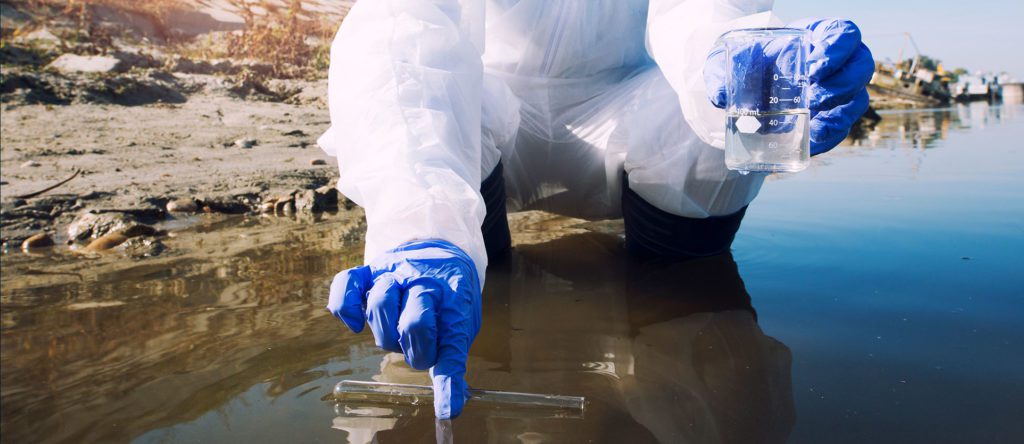
We’re Already Fighting to Try to Hold the Makers of GenX Accountable. Do You Need Help?
GenX is what the EPA calls an “emerging contaminant.” If you or someone you know has been affected by GenX, we’re here for you.
GenX Contamination May Entitle You to Compensation
On October 3, 2017, the Law Offices of James Scott Farrin and our co-counsel The Hannon Law Firm, filed suit against The Chemours Company and DuPont. This class action seeks compensation for property-related damages, and funds for a monitoring program to detect early signs of disease, as a result of contamination of the Cape Fear River water supply.
GenX, and other toxic chemicals, including PFOA and other perfluorinated chemicals, used by these companies, contaminated water that the Cape Fear Public Utility Authority (CFPUA) supplies to the majority of properties in Wilmington, and other areas of Pender, Brunswick, and New Hanover Counties. Testing done by the North Carolina Department of Environmental Quality verified a group of toxins, including GenX, released from the Fayetteville plant have contaminated the water supply from the Cape Fear River.
Answers to Questions About GenX in Household Water
How much GenX is in Wilmington’s Cape Fear water treatment plant? In 2013 and 2014, N.C. State University water quality scientist, Detlef Knappe, detected an alarming 631 parts per trillion, or nine times the EPA safe advisory level (70 parts per trillion) for C8, a previously banned compound. It was Knappe and his team who discovered the toxin in the river in 2012 and subsequently in the Cape Fear Public Utility Authority water treatment system.
On June 22, 2017, the U.S. Environmental Protection Agency measured over 720 parts per trillion of GenX in the finished water delivered to properties serviced by Cape Fear Public Utility Authority. In July, 2017, the Cape Fear Public Utility Authority reported GenX in finished water at 250, 286, and 185 parts per trillion. High levels of other perflourinated compounds including PFO2HxA and PFO3A were also found in July.
How long has the Cape Fear been contaminated? Since the 1980s. The Port City Daily reported that a Chemours environmental manager admitted that perfluoro-2-propoxypropanoic acid (PFPrOPrA), or GenX, had been released into the Cape Fear River as a byproduct of vinyl ether production since 1980 when the plant belonged to DuPont. This chemical was subsequently patented as “GenX” and replaced PFOA in DuPont’s manufacturing process.
What Is GenX?
GenX is DuPont’s replacement for a similar chemical compound, PFOA, one of the C8 family of chemicals, which the company produced for decades. The EPA sought to discontinue the use of C8 chemicals because of their extreme toxicity to humans, wildlife, and the environment. DuPont recently settled a class action lawsuit for $670.7 million for, among other things, knowingly releasing C8 into mid-Ohio Valley streams and tributaries that flowed into the Ohio River.
DuPont documents and memos showed evidence that the company knew for decades of the dangers of C8 but kept the information hidden from the public, plant employees, and regulators. Meanwhile C8 seeped deep into water tables and contaminated well water.
GenX and C8 Similarities
GenX and C8 (including a chemical known as PFOA) belong to a family of chemicals known as fluorochemicals (PFAS). They have been used to make Teflon, Gore-Tex, Scotchguard, stain resistant carpets. They’re used in fast food wrappers, pizza boxes, and dental floss. The chemicals are used to make fire retardant in clothing, blankets, and in the foam to put out fires.
PFOA is no longer manufactured in the U.S. because studies have shown that it persists indefinitely in the environment and accumulates in the human body.
Epidemiologists have identified “a probable link” between C8 exposure and high cholesterol, ulcerative colitis, thyroid disease, testicular cancer, kidney cancer, and pregnancy-induced hypertension.
Although the EPA gave DuPont the green light in 2009 to manufacturer GenX, the agency noted that it appeared to demonstrate many of the same risks to humans and the environment as C8.
GenX is what the EPA calls an “emerging contaminant,” which carries no safety regulation standards. Recently, the N.C. Dept. of Health set a Health Advisory at 140 parts per trillion.
Information about these chemicals can often be extremely hard to come by. Knappe explained for northcarolinahealthnews.com, “The chemicals are often protected as confidential business information. It’s much harder for scientists, regulators, and drinking water providers to even know what’s in the water.”

